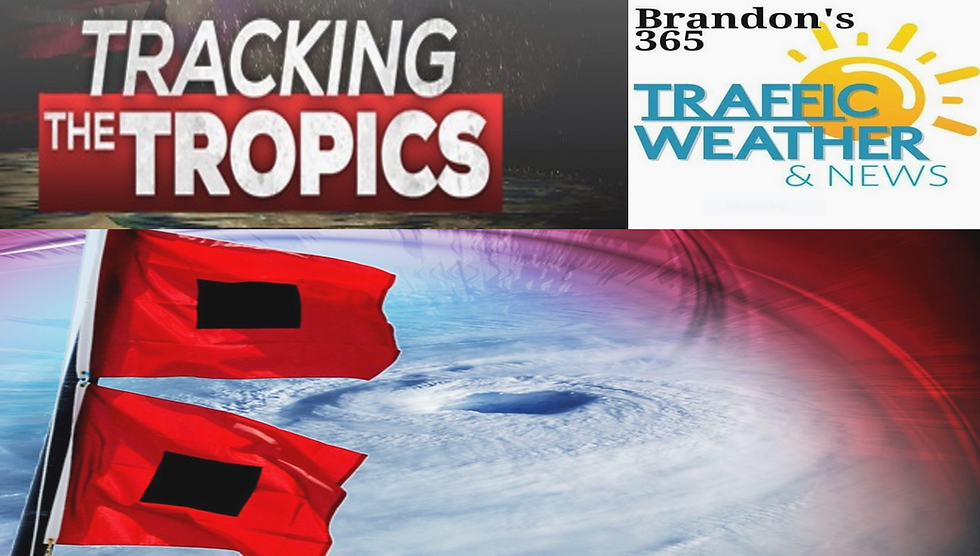IMPORTANT THINGS YOU MUST KNOW FOR SEVERE WEATHER SEASON
- Brandon Shipp

- Mar 1, 2020
- 3 min read
Updated: Sep 18, 2021

1. TAKE SEVERE THUNDERSTORM WARNINGS AS SERIOUS AS TORNADO WARNINGS
Severe thunderstorms can cause just as much damage as a tornado over a larger area!
For a storm to be severe it has to have winds of 58 mph or greater and or have quarter size hail. Hail can also cause millions of dollars in damage!
2. METEOROLOGISTS RIGHTFULLY ARE GOING TO BREAK INTO PROGRAMING FOR TORNADO WARNINGS
It is quite an issue with society having a problem with shows being interupted for tornado and severe weather coverage. Meteorologists break into programing to provide life saving information. New radar scans are constantly updating and areas of rotation can change intensity and direction very fast so meteorologists must bring the public minute by minute updates pinpointining the danger street by street and city by city.
3. KNOW WHAT COUNTY YOU LIVE IN AND BE ABLE TO FIND YOURSELF ON A MAP
Watches and Warnings are issued by county it is important to know where you live and also to know the counties surrounding you to know when a storm is threatening your area.
4. LIGHTNING AND THUNDER IS DANGEROUS BUT NOT CLASSIFIED AS SEVERE
Many people often think lightning and thunder makes a storm severe but that is not the case. Often times when a storm is strong but not severe and producing frequent thunder and lightning it will have a significant weather advisory or a special weather statement instead of a severe thunderstorm warning.
5. HAVE MULTIPLE WAYS TO RECIEVE WARNINGS
It is vital to have multiple ways to recieve warnings the best ways being an NOAA Weather Radio you can program it for your specific county and it will wake you up if you are sleeping when a warning is issued also maybe an app from your local tv station.
6. THERE ARE DIFFERENT TYPES OF TORNADO WARNINGS RESPECT THE POLYGON
A tornado warning does not neccesarily mean for sure there is a tornado. Tornado warnings sometimes are radar indicated and sometimes they are confirmed. When they are radar indicated that means there is tight rotation on radar velocity scans. Warnings are typically issued in advance to give you and your family plenty of time to seek shelter! There are 2 different ways to determine if a storm is producing a tornado the first being a confirmed report from the public 9 times out of 10 a trained storm spotter or law enforcement and second being the coorelation coefficient on radar can detect debris being lofted in the air. A radar indicated tornado means the velocity shows a storm spinning that could produce a tornado at any minute. Some are spotted and confirmed. When tornadoes are confirmed and very dangerous they will either be listed as PDS (Particuarly Dangerous Situation) and the deadliest tornadoes most commonly EF-3-EF-5 ratings often are listed as a TORNADO EMERGENCY.
7. NEVER RELY ON AN OUTDOOR WARNING SIREN TO WARN YOU INSIDE
Outdoor Tornado warning sirens are only intented to warn you outside. Do NOT depend on them inside especially at night or early in the morning. You may never hear sirens if it is pouring rain or thundering.
8. BRANDON'S 365 WEATHER, TRAFFIC, AND MORE IS COMMITED TO BRINGING THE LATEST SEVERE WEATHER COVERAGE ONLINE
I try to cover all tornado warnings and severe thunderstorm warnings on my social media pages. I have MANY different radars and great technology to provivde potentially life saving information. I am constantly getting in new data during severe weather events before, during and after the storms.
9. BE CAREFUL TRYING TO CAPTURE A STORM/TORNADO ON CAMERA
Only take videos or picture if it is 100% safe to do so. Sometimes tornadoes can be rain wrapped and you can't see it until it is right on top of you. It is not safe 9 times out of 10 to try to capture one on camera or film a video. Use extreme caution.
10. NO MATTER THE WEATHER AND NO MATTER THE CITY I'VE GOT YOU COVERED!











Comments